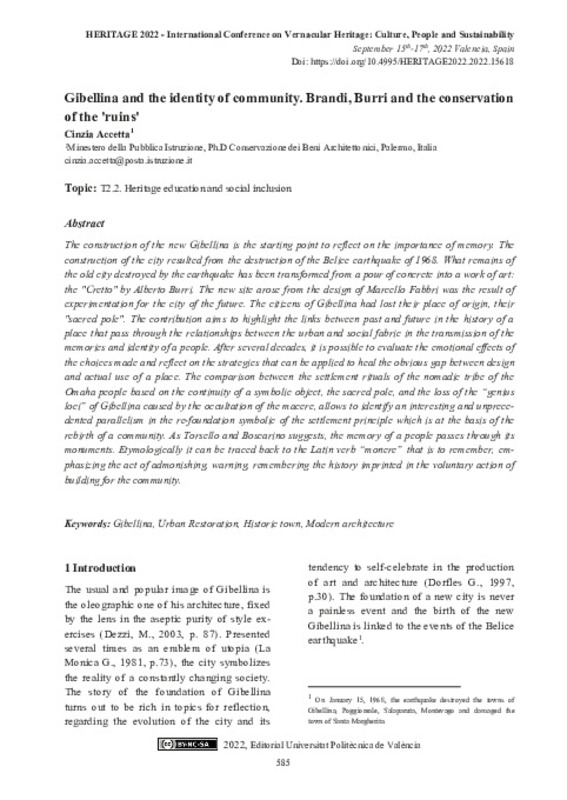JavaScript is disabled for your browser. Some features of this site may not work without it.
Buscar en RiuNet
Listar
Mi cuenta
Estadísticas
Ayuda RiuNet
Admin. UPV
Gibellina and the identity of community. Brandi, Burri and the conservation of the 'ruins'
Mostrar el registro completo del ítem
Accetta, C. (2022). Gibellina and the identity of community. Brandi, Burri and the conservation of the 'ruins'. En Proceedings HERITAGE 2022 - International Conference on Vernacular Heritage: Culture, People and Sustainability. Editorial Universitat Politècnica de València. 585-592. https://doi.org/10.4995/HERITAGE2022.2022.15618
Por favor, use este identificador para citar o enlazar este ítem: http://hdl.handle.net/10251/189110
Ficheros en el ítem
Metadatos del ítem
| Título: | Gibellina and the identity of community. Brandi, Burri and the conservation of the 'ruins' | |
| Autor: | Accetta, Cinzia | |
| Fecha difusión: |
|
|
| Resumen: |
[EN] The construction of the new Gibellina is the starting point to reflect on the importance of memory and the rites of passage between the past and the future of a people. The construction of the city resulted from the ...[+]
|
|
| Palabras clave: |
|
|
| Derechos de uso: | Reconocimiento - No comercial - Compartir igual (by-nc-sa) | |
| ISBN: |
|
|
| Fuente: |
|
|
| DOI: |
|
|
| Editorial: |
|
|
| Versión del editor: | http://ocs.editorial.upv.es/index.php/HERITAGE/HERITAGE2022/paper/view/15618 | |
| Título del congreso: |
|
|
| Lugar del congreso: |
|
|
| Fecha congreso: |
|
|
| Tipo: |
|








